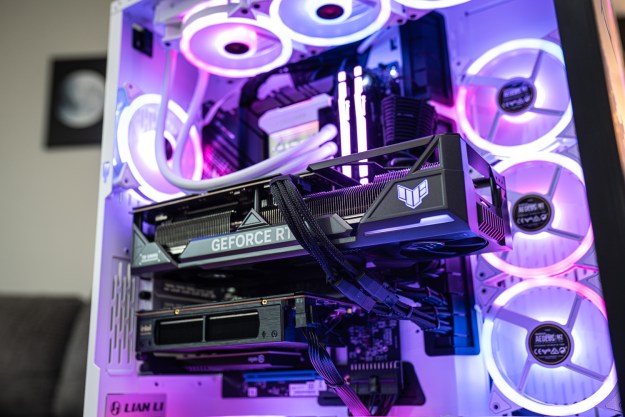More curio than techno, the Owl is a fun way to enjoy 3D content on your phone, with the bonus of it being designed by a real rock star.
Brian May is probably best known as the guitarist for legendary rock band Queen, but he’s also a dedicated fan of classic stereoscopic imagery, where dual images blend together to form a single, three-dimensional picture. Now, using the explosion in popularity of virtual reality and immersive video content as a catalyst, he is about to release a special 3D viewer that’s simple to use, device-agnostic, and harks back to the stereoscopic viewers used in Victorian times. It’s called the Owl, and we’ve tried it out.
The pre-production unit we used felt like an effective, if low-tech, alternative to Google Cardboard.
More than a hundred and sixty years ago, Victorians gathered around their own version of Google Cardboard, or the classic Hasbro View-Master viewer, to look at spectacular (for the time) stereoscopic pictures. That viewer has inspired the Owl’s design, and it takes its name from the owl-like face that’s made by the lenses and nose section when it’s folded down for easy transportation and storage. It shares the same principle as those early Victorian devices, by mounting a pair of lenses at one end of a sliding tray, facing a mounting system for either original stereoscopic pictures, or your smartphone.
The mounting plate is a big magnet that clamps a metal plate you stick to the back of your phone, making the Owl’s screen. It’s a huge expanse, and easily accommodates an iPhone 6S Plus, while leaving room to interact with the screen, volume controls, and to plug in a set of headphones. The Owl is made of sturdy plastic, and there are four clips that hold it together. Underneath, there’s a plaque that proudly states, “Designed by Brian May.”
Real life rock star
Yep, this really is the work of the man himself. May explained that he came up with the Owl a few years ago, to recreate what he called the “intimate experience” of Victorian stereoscopy. Modern VR is experienced through closed devices like Google Cardboard and the HTC Vive, and with it comes the fatigue and annoyance of heavy devices on our heads. The Owl overcomes these issues, while still rewarding the viewer with 3D, virtual reality content.
The pre-production unit we used felt like an effective, if low-tech, alternative to Google Cardboard. To demonstrate, May loaded up a Google-produced 3D animated video of Queen’s Bohemian Rhapsody on our test phones, which we all watched together on the Owl. Paired with effective binaural sound, which changes direction with your head movement, it was a surreal experience. We enjoyed the music in the same room as the guitarist, while watching a psychedelic video on a 3D viewer that he designed.
The hardware in the Owl was a Nexus 6P, and we’ve subsequently watched 3D YouTube videos on a Galaxy S7 Edge using the Owl, and it actually looked slightly better. It works best in dim lighting conditions, and the Owl needs to be shifted around quite a lot to find a sweet spot where you get one image rather than three. That proved a little distracting. By gripping the Owl in a particular way, we could slide the screen closer to, or further away, to adjust focus and to see larger pictures.
Made by a dedicated fan
The Owl isn’t a “modern” VR viewer in the same way as something like Gear VR, but a loving recreation of what arguably inspired it, made by a man who is passionate about the art. A keen collector of stereo photos, May’s extensive collection has been displayed in the Tate Modern art museum, and contains pictures that are believed to be unique. He’s equally fascinated by modern technology, and right before the Owl’s launch, was on stage in Barcelona, where the concert was filmed with a VR rig suspended on wires, so it could zip through the audience and right up on the stage.
Much like the stereoscopic pictures that appeared a century ago, the Owl is a fascinating curio, that while not technically astonishing, serves as a reminder to all who look through its lenses that the concept of VR isn’t really anything that new. May put it perfectly, saying, “Stereoscopy came first, a hundred years later we got 3D, and now we have VR. Fundamentally, they’re all pretty much the same thing.”
You’ll be able to buy the Owl Stereoscope directly from the London Stereoscopic Company’s website sometime this month, at a price of £25.
Highs:
- Easy to use
- Surprisingly effective 3D view
- Designed by a real rock star
- Inexpensive
Lows:
- A bit fiddly to find the best viewpoint
- Works best when not wearing glasses








